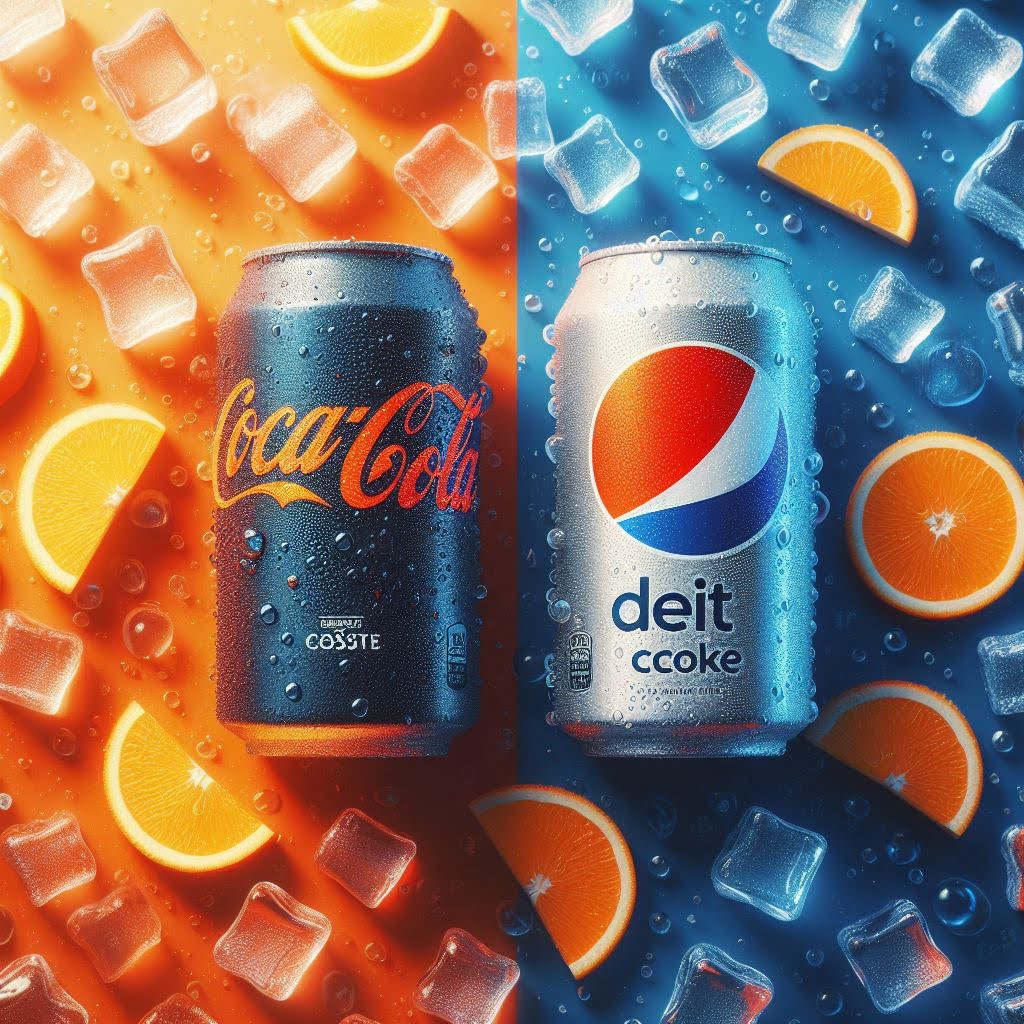Navigating Dual Branding: A Comprehensive Exploration

Navigating Dual Branding: A Comprehensive Exploration
Have you ever encountered sneakers adorned with two logos or a cosy coffee shop tucked inside a bustling bookstore? Welcome to the world of dual branding – a captivating fusion of two distinct brands aiming for a harmonious collaboration. In this exploration, we unravel the intricacies of dual branding, evaluating whether it's a powerhouse partnership or a recipe for confusing cocktails.
Decoding Dual Branding:
At its core, dual branding is akin to peanut butter joining forces with jelly to create a tastier concoction. It involves two separate brands collaborating to co-develop products, services, or marketing campaigns under a joint identity. For example, the collaboration between Nike and Apple for the Apple Watch seamlessly merges sportswear with cutting-edge technology.
Dual Marketing in Action:
The promotional arm of dual branding, dual marketing, is all about leveraging resources and expertise to amplify a shared message. It's akin to two megaphones harmonising their voices, creating a campaign that resonates twice as loud across a broader audience. An illustration of dual marketing excellence is the partnership between Starbucks and Spotify, where coffee enthusiasts enjoy curated playlists in-store, enhancing the coffee shop experience.
Evaluating the Sweet Synergy and Sour Mismatch:
Like any partnership, dual branding has its good, bad, and ugly aspects:
The Good:
- Reach New Audiences: Tap into each other's customer base to expand market reach.
- Boost Brand Awareness: Two familiar faces enhance brand recognition.
- Share Resources: Cut costs and leverage each other's strengths.
- Create Unique Offerings: Combine products or services for freshness.
The Bad:
- Brand Confusion: Messy co-branding may need to be clarified for consumers and dilute brand identities.
- Unequal Partnerships: One brand may overshadow the other, leading to resentment.
- Logistical Challenges: Coordinating two teams can be tricky.
The Ugly:
- Brand Cannibalization: New offerings might compete with existing products, hurting sales.
- Damaged Reputation: A lousy partnership can tarnish both brands' images. An exemplary example is the failed collaboration between Pepsi and Kendall Jenner in a 2017 ad, which received backlash for its insensitive portrayal of social issues.
To determine if dual branding is a good fit, carefully weigh the potential benefits against the risks. Ensure your partner shares the same brand values and target audience as you do. Ensuring that your collaboration is aligned with your brand's goals and message is essential.
Crafting a Dual Branding Strategy:
Before diving in, establish a master plan:
- Define Your Goals: Specify what you aim to achieve with dual branding.
- Choose the Right Partner: Find a brand that complements, not competes. For instance, the partnership between GoPro and Red Bull showcases the synergy between action sports and energy drinks.
- Develop a Clear Value Proposition: Highlight what makes your dual offering unique.
- Craft a Cohesive Brand Identity: Create a joint logo, messaging, and visual style.
- Execute Flawlessly: Ensure seamless collaboration and communication.
Solutions and Best Practices: For a successful dual branding initiative:
- Keep it Simple: Avoid overly complex co-branding initiatives.
- Focus on Shared Values: Choose a partner aligned with your brand's core beliefs.
- Communicate Clearly: Be transparent about the partnership and its benefits.
- Track Your Results: Measure the impact and adjust strategies as needed.
Dual Branding's Advantages and Disadvantages:
A balanced perspective reveals:
Pros:
- Increased Market Share: Reach a wider audience and tap into new markets.
- Enhanced Brand Image: Create a more positive and memorable perception.
- Shared Resources: Reduce costs and leverage strengths.
Cons:
- Brand Confusion: The consumer needs clarification about the brands involved.
- Unequal Partnerships: One brand may benefit more than the other.
- Logistical Challenges: Coordinating two different brands can be complex.
Elevating Brand Image through Dual Branding:
Dual branding is a marketing strategy that involves creating two distinct brands for the same product or service, targeting different segments of the market. Dual branding can help to increase market share, customer loyalty, and brand awareness, as well as differentiate the product or service from competitors. Some examples of dual branding are:
Marriott and Courtyard by Marriott: Catering to Diverse Traveler Tiers
Marriott:

Marriott is a beacon of luxury in the hotel industry, specifically designed for high-end travellers seeking an opulent and indulgent experience. With a commitment to exceptional service, lavish amenities, and elegant accommodations, Marriott caters to those who prioritise a premium hospitality experience. From personalised concierge services to upscale dining options, Marriott aims to exceed the expectations of discerning travellers.
Courtyard by Marriott:
On the other hand, Courtyard by Marriott occupies the mid-range segment, strategically targeting business travellers and families. Recognising the need to balance quality and affordability, Courtyard by Marriott offers comfortable accommodations, modern amenities, and business-friendly services. It provides a more accessible option for those who seek a reliable and efficient stay without compromising on essential comforts. Courtyard by Marriott's approach is centred around practicality and convenience, making it an ideal choice for a broader audience.
Toyota and Lexus: Bridging the Gap Between Mass Appeal and Premium Luxury
Toyota:

As a mass-market car brand, Toyota has solidified its reputation for producing reliable, affordable, and fuel-efficient vehicles. Targeting a broad demographic, Toyota vehicles are known for their practicality and dependability. From compact cars to SUVs, Toyota focuses on meeting the transportation needs of the everyday consumer, ensuring accessibility without compromising on quality.
Lexus:
In contrast, Lexus is a premium car brand offering a range of vehicles that prioritize luxury, performance, and innovation. With meticulous craftsmanship, cutting-edge technology, and an emphasis on a superior driving experience, Lexus caters to consumers seeking heightened sophistication. Lexus is synonymous with elegance and advanced automotive engineering, from high-performance sedans to luxury SUVs.
Coca-Cola and Diet
Coke: Quenching Diverse
Thirsts

Coca-Cola:
Coca-Cola, a timeless soft drink brand, has achieved global acclaim for its classic formula that appeals to a broad spectrum of consumers. With its signature taste, Coca-Cola targets individuals across age groups and cultural backgrounds. The brand's universal appeal lies in its ability to evoke a sense of nostalgia and joy, making it a go-to beverage for various occasions.
Diet Coke:
In response to evolving consumer preferences, Diet Coke emerged as a low-calorie alternative within the Coca-Cola family. Specifically targeting health-conscious individuals and a predominantly female demographic, Diet Coke offers the same refreshing experience with reduced calorie content. This variant aligns with changing lifestyle trends and dietary considerations, providing a choice for those seeking a lighter option without compromising the iconic Coca-Cola flavour.
In summary, each pair—Marriott and Courtyard by Marriott, Toyota and Lexus, Coca-Cola and Diet Coke—strategically caters to distinct market segments, offering tailored experiences and products to meet the diverse preferences of consumers.
Starbucks and Starbucks Reserve: Crafting Coffee Experiences for Every Palate
Starbucks:

Starbucks, a global coffeehouse chain, has become synonymous with providing a cosy and familiar environment for many coffee enthusiasts. With an extensive menu featuring various coffee blends, teas, and snacks, Starbucks caters to the everyday coffee lover seeking a convenient and social space to enjoy their favourite brew.
Starbucks Reserve:
On the other end, Starbucks Reserve represents a more exclusive and premium experience. Targeting coffee connoisseurs and those passionate about the art of coffee, Starbucks Reserve offers rare, small-lot coffees and a sophisticated atmosphere. With its reserve bars and immersive coffee experiences, Starbucks Reserve aims to elevate the coffee-drinking journey for those who appreciate the nuances of flavour and craftsmanship.
Samsung and Samsung Galaxy: Innovation Across Market Tiers
Samsung:
Samsung, a tech giant, is renowned for its diverse range of electronic products catering to the mass market. From refrigerators to budget-friendly smartphones, Samsung focuses on delivering reliable and accessible technology solutions for a broad consumer base, emphasising functionality and affordability.
Samsung Galaxy:
In contrast, the Samsung Galaxy line is a premium series within the brand, targeting tech enthusiasts and those seeking cutting-edge features. From high-end smartphones to top-tier smartwatches, Samsung Galaxy represents innovation, advanced technology, and sleek design. It caters to consumers who prioritise top-of-the-line specifications and are willing to invest in a premium technological experience.
Dove and Dove Men+Care: Personal Care Tailored for Every Gender
Dove:
Dove, a well-established personal care brand, has built its reputation around products emphasising gentle skin care. With a focus on inclusivity and natural beauty, Dove's products, including soaps and lotions, appeal to a diverse audience of women seeking skincare solutions that prioritise nourishment and simplicity.
Dove Men+Care:
Recognising men's unique skincare needs, Dove introduced the Dove Men+Care line. Tailored specifically for male grooming needs, this sub-brand offers products like body washes and deodorants designed to address the distinct requirements of men's skin. Dove Men+Care combines effective skincare with a masculine approach, catering to men who seek products aligned with their grooming preferences.
Done right, dual branding elevates brand image, portraying your brand as innovative, collaborative, and relevant to a broader audience. It's like a celebrity endorsement but with two stars! An example is the collaboration between fashion brand Louis Vuitton and streetwear label Supreme, creating an exclusive and highly sought-after collection.
Co-branding and Dual Branding: Understanding the Spectrum:
Co-branding encompasses various brand partnerships, while dual branding is a specific type where two brands jointly develop a product or service. Co-branding is the family tree, and dual branding is a unique branch.
Strategic Considerations in Dual Branding:
This deeper dive explores strategic elements in dual branding, such as market research, target audience analysis, and potential challenges like brand dilution. It's like the fine print in the dual branding contract.
In this intricate exploration, we navigate the dual branding landscape, uncovering its potential for synergy and challenges. Whether it's a powerhouse partnership or a confusing cocktail depends on the careful orchestration of this brand symphony.

Blog Admin:
Ravinder Bharti
CEO & Founder -
Public Media Solution
About: Ravinder Bharti is the Founder and
CEO of Public Media Solution,
a leading
marketing, PR, and branding company based in
India.